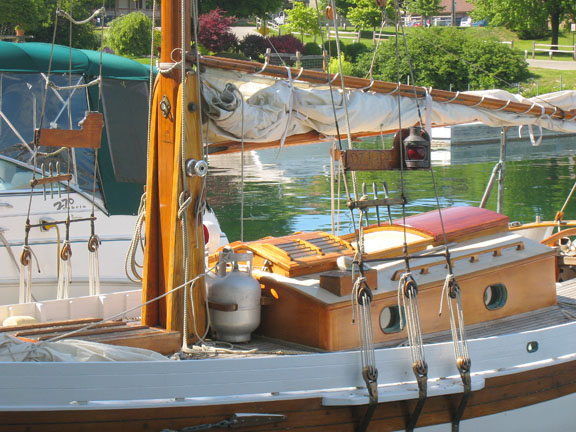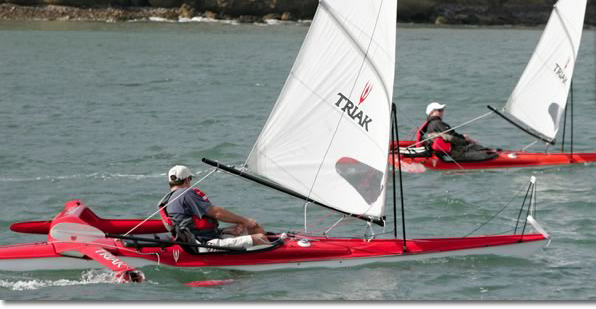Supreme canoe paddling tip: Reach forward with both upper hand and lower hand. Arms straightish. Rotate to reach. Hit it hardest at the catch. Drop upper hand inward to lift blade out to the side at hip. Don’t bend arms much. –This method saves energy and makes a boat go much easier/faster for a given effort. You can also tilt forward and crunch abs a couple inches when you “hit it.” Now, this advice probably works best when using a bent-shaft paddle, but I bet it’s good all-round. Bending the arms is weak and fatiguing. Making this change made a night’n’day difference last weekend when I had a strong new paddler in my boat. He really noticed it, too, when he changed from “lilydipper” style to this easy-ergonomics way, and was psyched by how well it worked.
Kayaking, too, uses this same basic method, even with the Greenland touring style. –Rotate, keep arms straightish, apply power at the catch, lift paddle at the hip. (The difference there is that in Euro racing-style you keep your off/upper hand high and start it near your ear, with your elbow high also. Upper hand doesn’t cross centerline. In Greenland touring style the hands are kept low, near deck, to avoid windage.)
There are many finepoints to all this, for both canoeing and kayaking, but that’s the gist. These simple tips are enough to totally transform your paddling experience, especially if you’re going for fitness, distance, or longer durations.
Lighter paddles seem to be well worth the prices. OK, once you get down to a basic carbon item you’re set. You don’t need to get into any arms races, but carbon does make human arms really happy.
Now, with all this said, there is also a Canadian and Indian style of canoeing, which seems to just take it much easier and in rivers it relies on the speed of the current for most forward motion and on lakes it relies on the momentum of a loaded canoe.
And wooden paddles can be fairly light. And if you’re taking your time, why worry anyway — spending your years with an item of artistic craftsmanship has a lot to be said for it.
The “easy does it” approach makes a fair bit of sense because paddle-craft are slow anyway and distances are achieved via patience and steadiness. The hullspeeds of boats seem to vary from, say, 3.5mph for a tub to 4 for a tourer to 4.5 for a cruiser to 5 for a racer. Really, it’s not much. On swift rivers, if the current speed is 3 mph already, then it might not be worth it to work hard and at a fast cadence to get just a couple mph more speed. Plus, by taking it easy you can think more and observe more and maybe get some fishing in.



